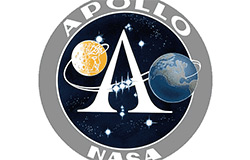Gravitation
Autor: Walter Bislin
Original: walter.bislins.ch
Gravity is unable to be proven (it doesn’t exist is why)
Wrong, Gravity is real. An engineer has to deal with it in many, many calculations. There are many devices that only function because of gravity. How do we know that it’s gravity what causes their functioning?
Observing Gravity
How can we measure and observe the properties of gravity?
We can observe that all masses on earth are accelerated the same amount per time unit with g = 9.81 m/s2 on the surface of the earth, if we can neglegt the drag and buoyant force.
We can measure that gravity gets weaker with altitude exactly as predicted by Newtons theory of gravitation.
We can observe the orbits of planets and moons, due to gravity. This orbits can be computed with Newtons law of gravity.
We can observe the period of a pendulum which is only dependent on the length of the pendulum and gravity g.
We can measure the force of gravity with a scale. Because gravity is a force, it can be summed with other forces. Eg, on the spinning earth there is a latitude dependent centrifugal force acting perpendicular away from earth’s axis of rotation. What we measure with a scale on any point on earth is the vector sum of gravity and the centrifugal force. That means a mass has different weight depending on the latitude. This is the reason why scales have to be calibrated for different latitudes. See my Earth Gravity Calculator.
Devices depending on Gravity
We know exactly all properties of gravity. Its properties are the thing many devices are based on. No density or buoyancy can explain it. They are completely other things and have completely other math to be explained than gravity. You can’t replace gravity with density/buoyancy/weight. It simply does not work in reality. I could prove it to you, but math and physics is certainly not in reach of your understanding.
All inertial navigation systems (based on gyroscopes) rely on gravity and the rotation of the earth to sense the directionn to true north and calculate the latidude without any reference to the outside. Their mounting platforms are mounted in gimbals and have to incorporate Schuler tuning, so they always are parallel to the surface of the earth. Like a pendulum, Schuler tuning is only dependent on gravity and the radius of the earth.
https://en.wikipedia.org/wiki/Schuler_tuning
Check this out. Gyrocompass Theory and Operation – madden-maritime.com
- https://videopress.com/v/QYuFri5n
- https://madden-maritime.com/gyrocompass-theory-and-operation/
- https://maritime.org/doc/gyromk14/index.htm
You see, there are devices that rely on the fact that gravity exists and that the earth is a rotating globe. You can’t simply deny it. No airplane or rocket could navigate without such devices. Fact!
Measuring Gravity
There are many ways to measure gravity directly: Cavendish experiment (I personally executed this experiment in physics class to determine the gravitational constant G 35 years ago). This experiment is repeated uncountable times each year as part of physics lectures. Orbital periods depend on the gravity of the central body. You can measure gravity with a simple pendulum. The period of a pendulum depends on gravity and the length of the pendulum only. So if you know the length of a pendulum and the period you can compute gravity g. You can’t calculate the desired path of any rocket or ballistic object without knowing exactly how gravity works.
Beside the Cavendish experiment we can measure the gravitational force that a mountain or hill exerts on something beside it. This was done e.g. with the Schiehallion experiment:
https://en.m.wikipedia.org/wiki/Schiehallion_experiment
There are a bunch of methods to measure the gravitational constant G = 6,67 × 10–11 m3 /kg/s2:
- torsion balance, dynamic mode
- torsion balance, dynamic compensation
- suspended body, displacement
- stationary body, weight change
- attraction between a cloud of cold rubidium atoms and tungsten weights
- Schiehallion experiment, indirect measurement
- atom interferometry
- pendulum period change due to testmass
- beam balance
- Free-fall absolute gravimeters and gradiometers
More Infos:
- https://aip.scitation.org/doi/full/10.1063/1.4994619
- https://www.uzh.ch/cmsssl/physik/dam/jcr:bd96381a-3320-4ef4-a740-34760148f0ce/chap01.pdf
- https://phys.org/news/2014-06-method-gravitational-constant.html
- https://en.wikipedia.org/wiki/Schiehallion_experiment
Properties of Gravity
Properties of gravity predicted from General Relativity and confirmed by uncountable experiments are:
- The Equivalence principle: observation that the gravitational “force” as experienced standing on a massive body (such as the Earth) is the same as the pseudo-force experienced by an observer in an accelerated frame of reference far from any gravity. Equivalence principle (Wikipedia)
- Bending of light and other EM waves due to spacetime curvature near massive objects like stars, black holes and galaxies
- Gravitational Time dilation, taken into account in GPS navigation systems
- Gravitational waves, see LIGO
- Black Holes
- Frame-dragging effect, the amount by which the rotating Earth drags its local spacetime around with it: General Relativity and Gravity Probe-B – Barry Muhlfelder (SETI Talks) (YouTube)
Official site of Gravity Probe B with all data: einstein.stanford.edu
See also:
- Gravity and how the Heliocentric Model works
- Earth Gravity Calculator
- Cavendish Experiment Simulator
- Centrifugal and Gravitational Acceleration in an Aircraft
Scientific Theory of Gravity
Newtons and Einstein’s scientific theories of gravity are one of the most tested theories. They never failed in experiments accessable to us. Note: a scientific theory is not a guess or idea or hypothesis.
A scientific theory is an explanation of an aspect of the natural world that can be repeatedly tested and verified in accordance with the scientific method, using accepted protocols of observation, measurement, and evaluation of results. Established scientific theories like Newtons and Einsteins theory of Gravitation, have withstood rigorous scrutiny and embody scientific knowledge. Source: Scientific theory on Wikipedia
If someone wants to replace the theory of gravity, he has to come up with a theory, that has the same power of prediction of what the current theory has and it must be simpler or explain things we currently can’t explain yet.





TikTok: tiktok.com/@olegmks
ВКонтакте: vk.com/olegmks
YouTube: youtube.com/c/OlegMKS
Яндекс.Дзен: zen.yandex.ru/olegmks
RuTube: rutube.ru/channel/23320330/